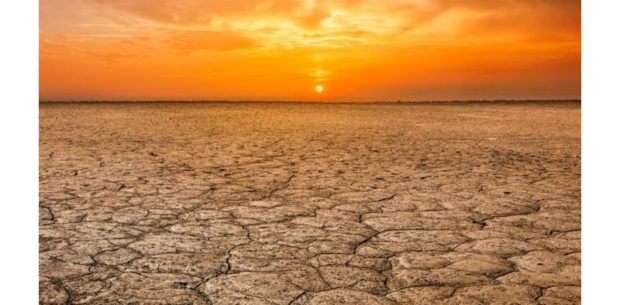
Karnataka among 5 states most vulnerable to adverse climate events, says study
PTI, Oct 27, 2021, 9:48 AM IST

New Delhi: Assam, Andhra Pradesh, Bihar, Karnataka and Maharashtra are most vulnerable to adverse climate events such as floods, droughts and cyclones in India, according to a report by a Delhi-based think tank.
The Climate Vulnerability Index released by the Council on Energy, Environment and Water (CEEW) shows that over 80 per cent of Indians live in districts vulnerable to climate risks.
At the upcoming climate conference COP-26, to be held in Glasgow from October 31 to November 12, developing countries like India are expected to demand that developed nations ramp up and deliver climate finance timely.
“This will help developing countries to strengthen adaptation mechanisms against such extreme climate events and also accelerate the low-carbon transition. The existing commitments made by developed countries are insufficient and yet to be met,” CEEW said in a statement.
The study highlighted that 463 districts in India are vulnerable to extreme floods, droughts and cyclones.
“More than 45 per cent of these districts have undergone unsustainable landscape and infrastructure changes. Further, 183 hotspot districts are highly vulnerable to more than one extreme climate event,” it stated.
Climate Vulnerability Index also revealed that more than 60 per cent of Indian districts have medium to low adaptive capacity.
Dhemaji and Nagaon in Assam, Khammam in Telangana, Gajapati in Odisha, Vizianagaram in Andhra Pradesh, Sangli in Maharashtra, and Chennai in Tamil Nadu are among the most climate-vulnerable districts, it said.
Arunabha Ghosh, the CEO of CEEW, said that combatting the rising frequency and scale of extreme climate events is fiscally draining for developing countries such as India.
“At COP-26, developed countries must regain trust by delivering the USD 100 billion promised in 2009 and commit to stepping up climate finance over the coming decade,” he said.
India must collaborate with other countries to create a Global Resilience Reserve Fund, which could act as insurance against climate shocks. This would ease the fiscal pressure on the most climate-vulnerable countries, especially from the global south, Ghosh said.
“Finally, developing a Climate Risk Atlas for India would help policymakers to better identify and assess risks arising from extreme climate events,” he added.
Abinash Mohanty, the programme lead at CEEW and lead author of the study, said the frequency and intensity of extreme climate events in India have increased by almost 200 per cent since 2005.
“Our policymakers, industry leaders and citizens must use the district-level analysis to make effective risk-informed decisions. Climate-proofing of physical and ecosystem infrastructures should also now become a national imperative.
“India must create a new Climate Risk Commission to coordinate the environmental de-risking mission,” he said.
With loss and damage rising exponentially due to the climate crisis, India must demand climate finance for adaptation-based climate actions at COP-26. Enhanced climate finance can also support India-led global agencies like the Coalition for Disaster Resilient Infrastructure to further mainstream climate actions, Mohanty added.
The CEEW study also highlighted that the states in India’s northeast are more vulnerable to floods, while the ones in the south and central are most vulnerable to extreme droughts.
“Further, 59 and 41 per cent of the total districts in the eastern and western states, respectively, are highly vulnerable to extreme cyclones,” it said.
The CEEW study also indicated that only 63 per cent of Indian districts have a District Disaster Management Plan. While these plans need to be updated every year, only 32 per cent of them had updated plans until 2019, it said.
“Highly vulnerable states like Maharashtra, Tamil Nadu, Odisha, Karnataka and Gujarat have improved their respective DDMPs and climate-proofed critical infrastructures in recent years,” the study noted.
It recommended that restoration of climate-sensitive landscapes will act as natural shock absorbers against extreme climate events.
Udayavani is now on Telegram. Click here to join our channel and stay updated with the latest news.
Top News

Related Articles More

Jyotirmath Shankaracharya slams RSS chief for ‘politically convenient’ position on restoring temples

Passengers on board Air India flight exchange blows over armrest space

PM Modi pays tributes to Charan Singh

Car bonnet catches fire; no injuries

15-year-old girl raped by school teacher in Rajasthan’s Sikar: Police
MUST WATCH
Latest Additions
Shivamogga: Two killed in road accident

Kundapura: Body of drowning victim found after jet ski incident

“FM ji FM ji, itna tax main kaise bharun”, asks investor Vijay Kedia in viral post

Jyotirmath Shankaracharya slams RSS chief for ‘politically convenient’ position on restoring temples

Geethartha Chinthane 133: Detachment with Responsibility
Thanks for visiting Udayavani
You seem to have an Ad Blocker on.
To continue reading, please turn it off or whitelist Udayavani.



















